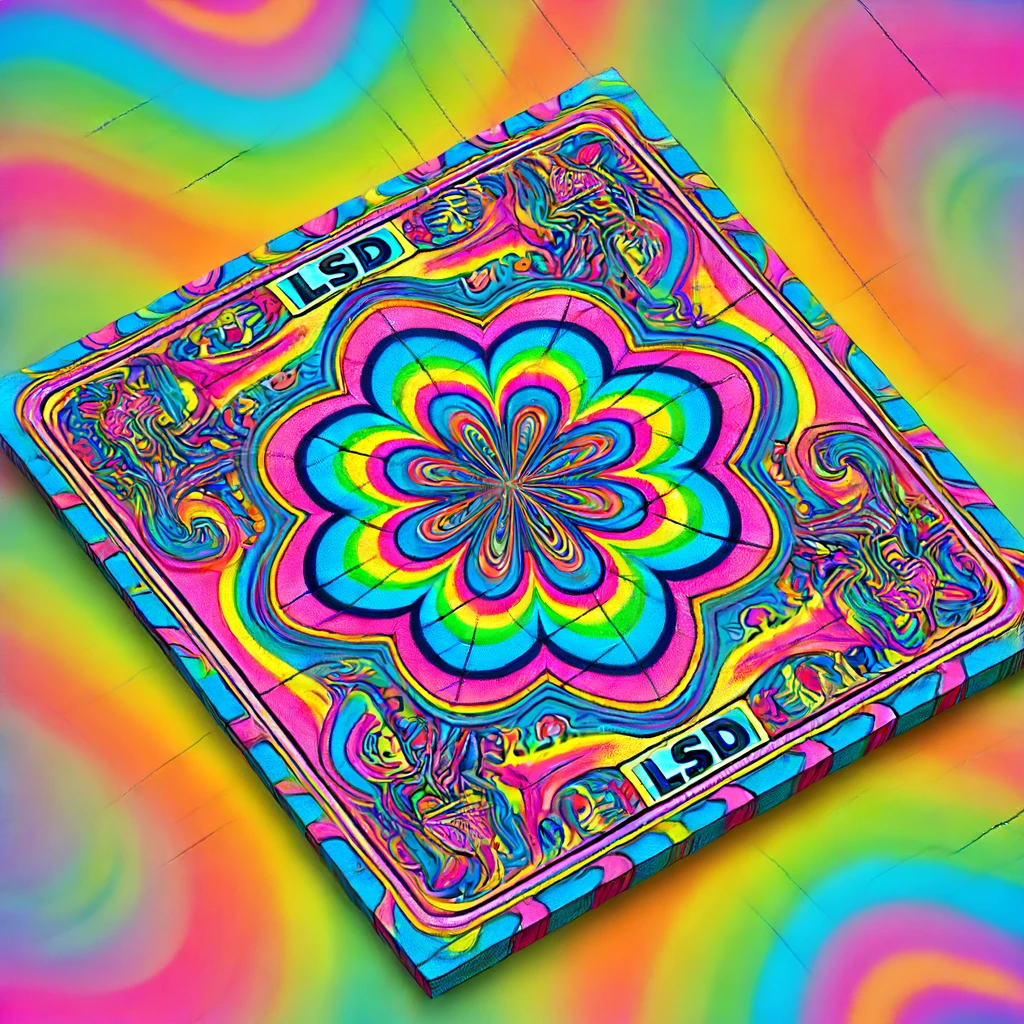The Science Behind LSD Blotter: Composition and Effects Explained
LSD blotter has long intrigued both scientists and the general public. But what exactly is it? And how does it work? In this article, we’ll dive into the science behind LSD blotter, exploring its composition, effects, and much more.
What is LSD?
Chemical Composition of LSD
Lysergic acid diethylamide (LSD) is a synthetic chemical derived from ergot, a fungus that grows on rye and other grains. Its chemical formula is C20H25N3O. You can learn more about the chemical properties of LSD from Chem Spider.
Discovery and Development
LSD was first synthesized by Swiss chemist Albert Hofmann in 1938. However, its psychedelic properties were not discovered until Hofmann accidentally ingested a small amount in 1943. For a detailed history, visit The Nobel Prize.
How is LSD Blotter Made?
Production Process
LSD is typically distributed on blotter paper, which is absorbent paper divided into small squares. The paper is soaked in an LSD solution, dried, and then cut into individual doses. More about this process can be found on Erowid.
Ingredients Used
The primary ingredient is LSD itself. However, blotter paper can also contain binders, fillers, and other substances to help with the distribution of LSD.
Quality Control
Ensuring consistent dosing is crucial in LSD production. Manufacturers must maintain strict quality control measures to avoid dangerous overdoses or ineffective doses.
Mechanism of Action
How LSD Affects the Brain
LSD primarily affects the brain’s serotonin receptors. It mimics serotonin, a neurotransmitter that plays a role in mood, perception, and cognition. For a deeper understanding of serotonin, check Psychology Today.
Interaction with Neurotransmitters
By binding to serotonin receptors, LSD disrupts normal brain function, leading to altered perceptions and hallucinations.
Short-term Effects of LSD
Psychological Effects
Users often experience visual hallucinations, altered sense of time, and enhanced sensory experiences. These effects can be both fascinating and overwhelming. For more information, visit Healthline.
Physical Effects
Physically, LSD can cause dilated pupils, increased heart rate, and elevated body temperature. Some users also report dizziness and nausea.
Long-term Effects of LSD
Mental Health Impacts
Long-term use can lead to persistent changes in mental health, including anxiety, depression, and flashbacks. Verywell Mind provides more details.
Physical Health Impacts
While LSD is not considered physically addictive, frequent use can still have negative effects on overall health, including sleep disturbances and cardiovascular issues.
LSD and Perception
Altered Senses
LSD is known for its ability to alter sensory perception, making colors seem more vivid and sounds more intense.
Synesthesia
Some users report experiencing synesthesia, a condition where senses overlap, such as “hearing” colors or “seeing” sounds. You can read more about synesthesia on Scientific American.
Therapeutic Uses of LSD
Historical Medical Use
In the 1950s and 60s, LSD was explored as a treatment for various mental health conditions, including depression and anxiety.
Modern Research and Potential Benefits
Today, there is renewed interest in LSD as a therapeutic tool, particularly for conditions like PTSD and severe depression. Check MAPS for ongoing research.
Risks and Side Effects
Common Side Effects
In addition to the desired psychedelic effects, users may experience anxiety, paranoia, and panic attacks. Drug Policy Alliance discusses these risks in detail.
Potential for Abuse and Dependency
While LSD is not physically addictive, psychological dependence can develop, leading to risky behavior and potential harm.
Legal Status of LSD
History of Legal Regulation
LSD was legal in the United States until 1968 when it was classified as a Schedule I substance, indicating a high potential for abuse and no accepted medical use.
Current Legal Status Worldwide
The legal status of LSD varies globally, with most countries imposing strict regulations or outright bans. For a detailed legal overview, visit UNODC.
Cultural Impact of LSD
Influence on Art and Music
LSD has had a profound influence on art and music, inspiring countless works and contributing to the counterculture movement of the 1960s. More on this can be found at Rolling Stone.
Counterculture Movement
The use of LSD became synonymous with the 1960s counterculture, promoting ideals of peace, love, and expanded consciousness.
Myths and Misconceptions about LSD
Common Myths Debunked
Myths such as “LSD stays in your spine forever” or “You can overdose on LSD” are common but unfounded.
Scientific Evidence
Scientific research has debunked many of these myths, providing a clearer understanding of LSD’s effects and risks.
Safe Practices for LSD Use
Harm Reduction Tips
If choosing to use LSD, it’s important to adopt harm reduction practices, such as using in a safe environment and having a sober trip sitter.
Recognizing and Managing Bad Trips
Knowing how to handle a bad trip is crucial. Techniques include grounding exercises and having access to a calm, safe space.
Future of LSD Research
Emerging Studies
Recent studies are exploring the potential of LSD in treating mental health disorders, offering hope for new therapeutic uses.
Potential Developments in Psychedelic Therapy
As research progresses, LSD may become a valuable tool in psychedelic-assisted therapy, helping individuals overcome various psychological challenges. For the latest research, check Johns Hopkins Center for Psychedelic and Consciousness Research.
Conclusion
LSD blotter remains a fascinating and complex substance. From its unique chemical composition to its profound effects on perception, LSD continues to captivate scientists and users alike. While it offers potential therapeutic benefits, it also carries significant risks. As research continues, we may uncover even more about this enigmatic compound.
FAQs
- What is the origin of LSD?
- LSD was first synthesized by Albert Hofmann from ergot fungus in 1938.
- How does LSD affect the brain?
- LSD mimics serotonin and binds to its receptors, altering perception and cognition.
- Is LSD addictive?
- LSD is not physically addictive, but psychological dependence can occur.
- What are the legal implications of using LSD?
- LSD is illegal in most countries and classified as a Schedule I substance in the U.S.
- Can LSD be used therapeutically?
- Emerging research suggests potential benefits for mental health disorders, but more studies are needed.


